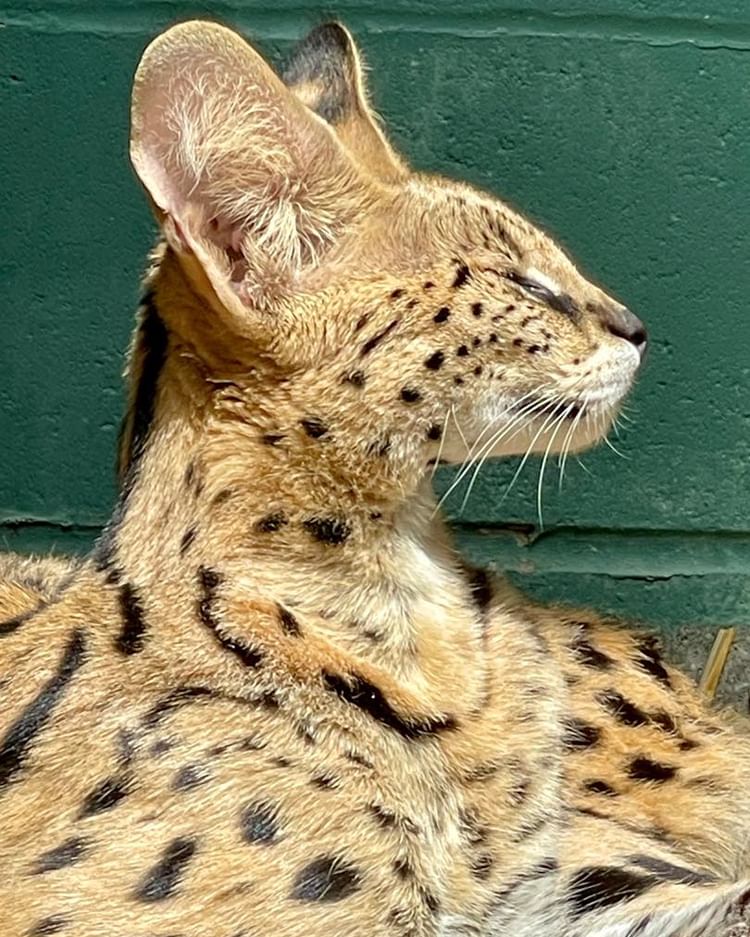Hello, feline fanatics and wildlife devotees! Today, we’re venturing into the mesmerizing world of serval cats – the elegant, long-legged hunters of the African savannah. Join me as we traverse the grasslands and reveal the fascinating secrets of these extraordinary wildcats.
Picture yourself on an African safari, scanning the horizon for wildlife, when suddenly, you spot a slender, spotted cat with enormous ears and an impressively long neck. Congratulations, you’ve just encountered a serval cat! These stunning creatures can be found throughout sub-Saharan Africa, prowling the grasslands and wetlands in search of their next meal.
Now, let’s talk about their appearance. With their golden-yellow fur covered in dark spots and stripes, serval cats are the embodiment of feline elegance. Their most striking features, however, are their remarkably long legs and oversized ears. These adaptations give serval cats an edge in their natural habitat, allowing them to detect prey and navigate the tall grasses with ease.
Did you know that serval cats are exceptional hunters? They have a remarkable success rate of around 50%, making them one of the most efficient predators in the animal kingdom. Their favorite prey includes rodents, birds, and insects, which they hunt using a combination of stealth and incredible agility.
Let’s delve a bit deeper into their hunting techniques. Serval cats use their large, sensitive ears to pinpoint the location of their prey, even if it’s hiding beneath the grass or underground. Once they’ve zeroed in on their target, they’ll leap into the air, using their powerful hind legs to pounce on their unsuspecting quarry.
Here’s a fun fact: serval cats have an impressive vertical leap, capable of reaching heights of up to 12 feet! This incredible ability allows them to catch birds in mid-flight, making them formidable predators both on the ground and in the air.
You may be wondering, “Where can I see these amazing animals up close?” Many zoos and wildlife parks around the world house serval cats, offering visitors a chance to admire their beauty and grace firsthand. These institutions also contribute to vital conservation efforts, as serval cat populations face threats such as habitat loss and human-wildlife conflict.
Before we wrap up, let’s touch on serval cats’ unique communication methods. They use a variety of vocalizations, from purrs and growls to chirps and high-pitched calls, to communicate with one another. These sounds help them express their emotions, maintain social bonds, and even attract a mate during the breeding season.
There you have it – the captivating world of serval cats! These elegant, agile hunters are a true testament to the wonders of the animal kingdom. Next time you visit a zoo or embark on an African safari, keep an eye out for these stunning felines and share your newfound knowledge with fellow wildlife enthusiasts. Happy serval cat spotting!


